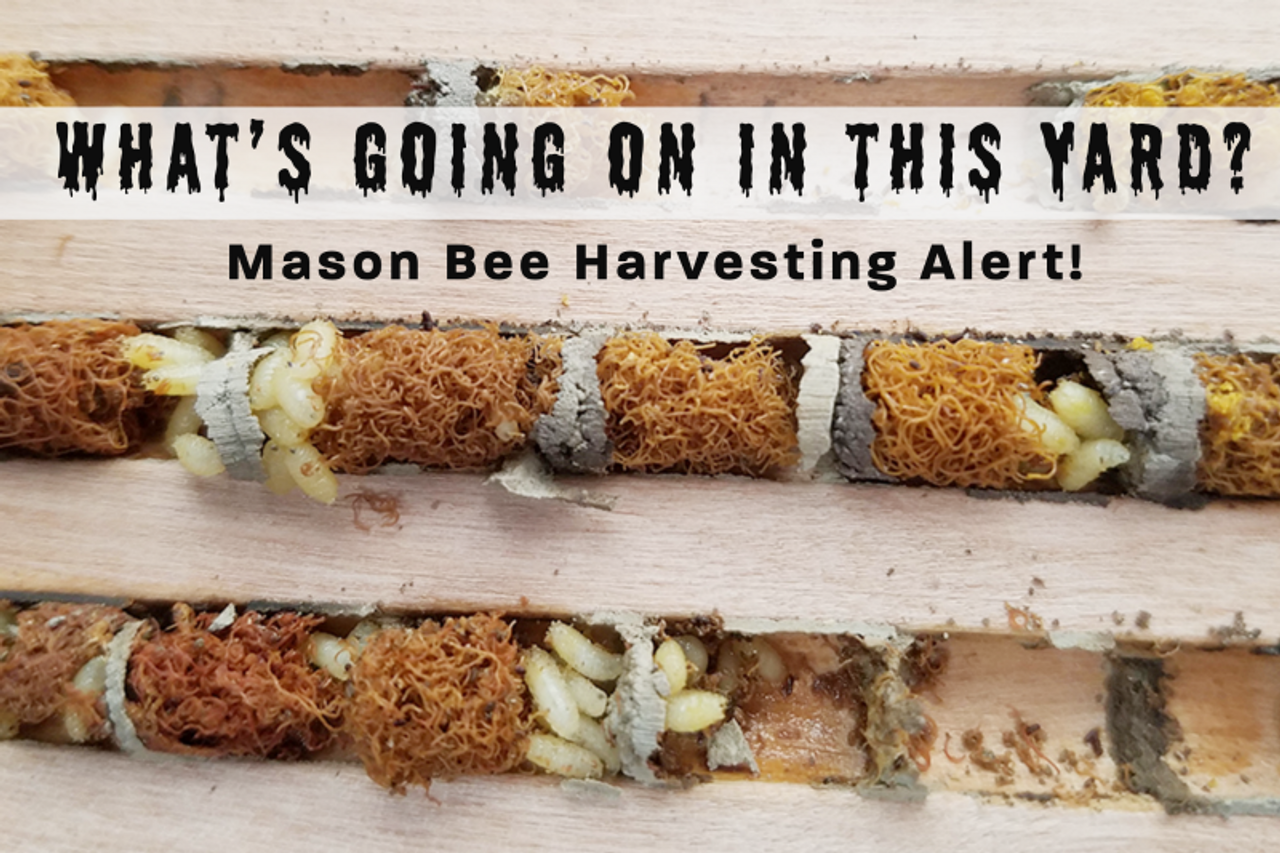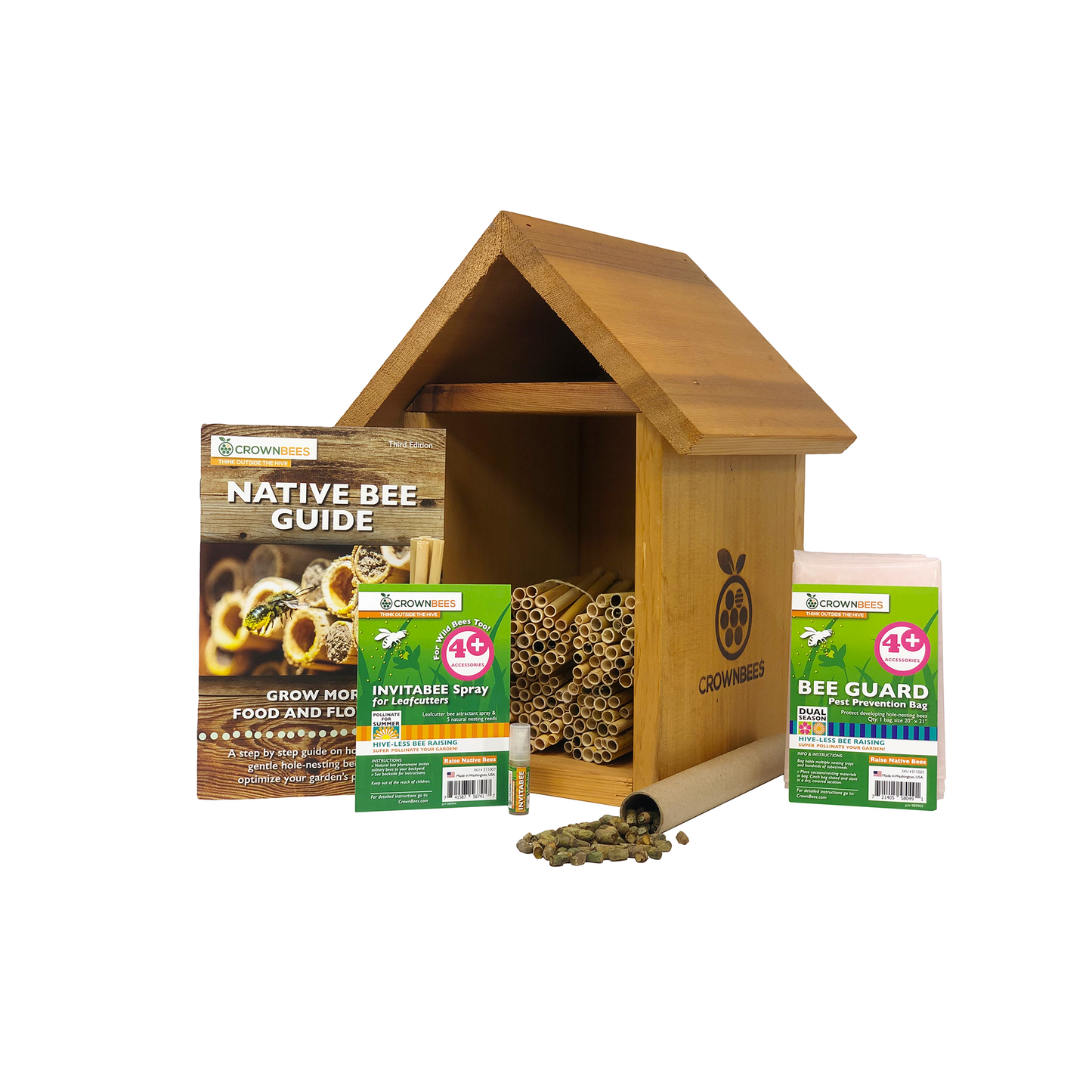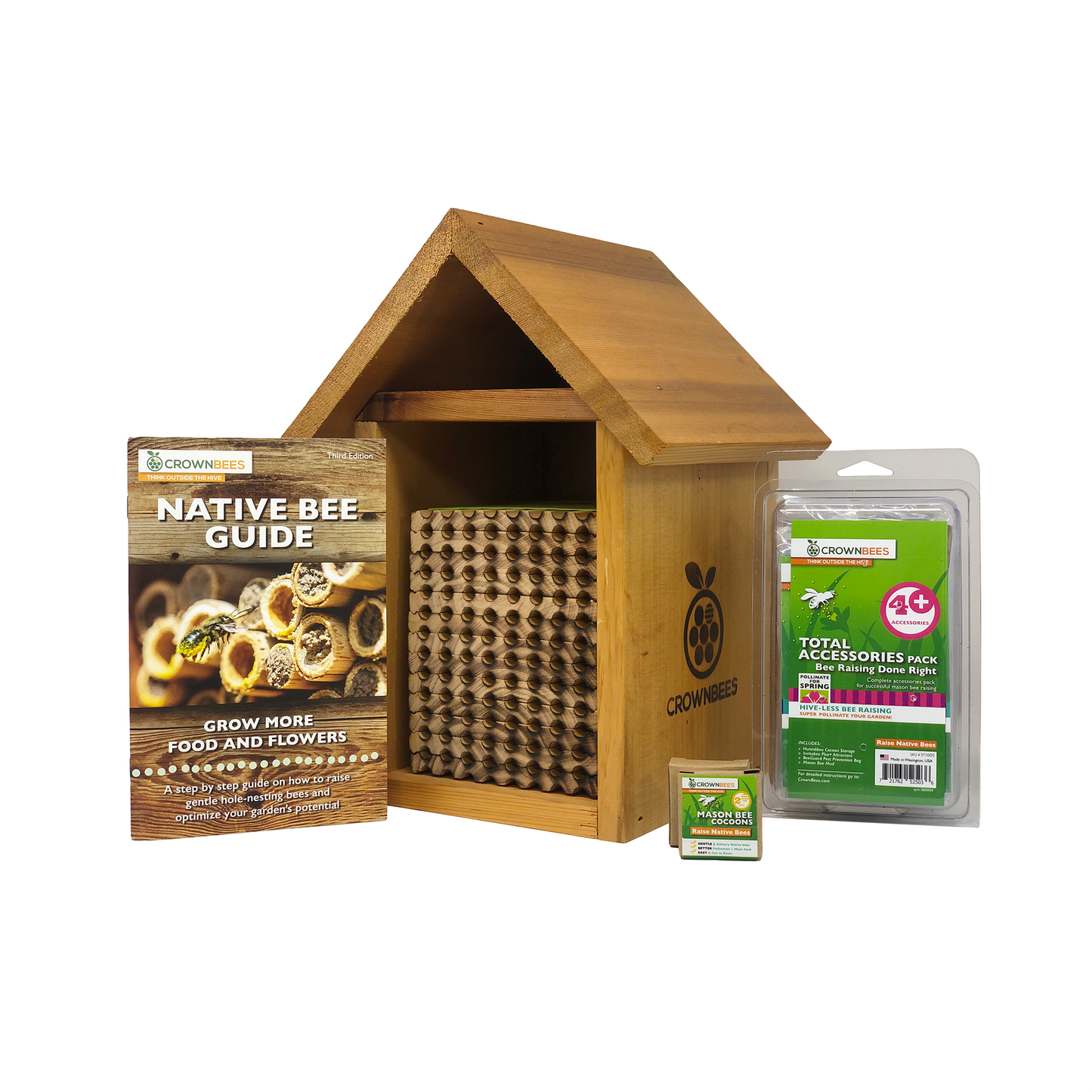
First and foremost, a THANK YOU to all of our Bee Farmers and Bee Buy Back Participants this season!
You can take pride knowing that your region-specific mason bee cocoons will go to next season's bee raisers and help increase pollination and food production across the country!
We also wanted to take this opportunity to alert you to a few emerging issues that we noticed during this harvesting season and give you a few tips to reduce the incidences of bee loss next year.
What we want to see!
A healthy mason bee cocoon (below) will appear dark grey or brown, ovular in shape, and firm to the touch. As expected, you'll also find mud and mason bee frass (poop).

What's going on in this yard?
Listed are the top 3 emerging concerns that we have for our 2021 harvesting season and a few tips to reduce the incidences of your bee loss next year.
1. Nesting Cavity is full of pollen balls and mud, but no bee cocoons.

We noticed a significant increase in the number of nesting materials with full strings of pollen balls that had either been partially consumed (#1) or not consumed at all (#2) this season. The likely culprit at fault for this issue is that the bees' foraging habitat had an abundance of chemicals and pesticides.
Certain pesticides, or pesticides in high concentrations, can kill eggs and bees outright. Carbamates, organophosphates, synthetic pyrethroids, chlorinated cylcodienes, and neonicotinoids are all highly toxic to bees. Even at low doses, pesticides can have non-lethal yet devastating impacts on bee reproduction.
Take a look at #1. The pollen loaf has been partially consumed; this means the female bee laid her egg, and once it hatched, the larva began consuming the pollen loaf. If the pollen loaf is contaminated by pesticides through uptake by the plant, from direct contact (by spraying), from pesticide drift, or the planting of pesticide-treated seeds. The larva may die before reaching maturity - the likelihood of death increases the higher the concentration of pesticides.
Take a look at #2. The pollen loaf is still wholly intact; this means the female either laid an egg, and it died before hatching, or the female forgot to lay an egg before sealing the cell. Even at low doses, pesticides can cause foraging bees to develop impaired memory, which could cause the female to forget to lay an egg.
One or two intact pollen balls per tray or handful of nesting tubes are natural. However, if you find a lot of untouched or partially intact pollen balls during harvesting, there is cause for concern, and you should try reducing your pesticide usage. If you already have a pesticide-free yard and garden, then share your knowledge with your neighbors. It may be that your bees are being affected by pesticide drift or runoff.
We've created printable pamphlets and fact-sheets to help your neighbors understand the effects lawn and garden treatments have your bees and other pollinators. Engaging other people with the issues is a powerful means for increasing awareness and making positive change!
To learn more about the dangers of pesticide use on our bee species and some pollinator-friendly pest control strategies to try out in your garden, check out The Importance of a Pesticide-Free Yard article!
2. A mass of about 10 -20 white or pale yellow maggots with sticky curly frass (poop).

The image above shows the top and bottom of a single row of nesting cavities in our re-usable wood trays.
You'll notice this entire tray is filled with masses of about 10 -20 while or pale yellow maggots with sticky curly frass where mason bee cocoons should be. These are Houdini fly maggots (close-up image below).

The Houdini fly, named after its unique method of escaping from bee nests, parasitizes mason bees. Female Houdini flies lay their eggs in nest cells before the female mason bee can seal the nest. The fly larvae quickly hatch and consume the pollen loaf before the mason bee larvae, which causes them to starve. Once development is complete in the spring, the adult Houdini fly inflates its head to break through the mud walls to escape.
Over the years, we've noticed more and more cells filled with this invasive species. This increase and spread are likely due to individuals and industries not taking the time to manage mason bee cocoons responsibly and sending infested nesting materials to different areas of the country.
At Crown Bees, our bees are certified by the Orchard Bee Association (OBA), which means we meet OBA's sustainable propagation and management practices such as control of pests and chalkbrood, best practices for shipping live mason bee cocoons, managing and keeping records of populations from different regions, and sustainable nesting practices. Learn more about our bees in our article, Where Our Mason Bees Come From.
Researchers are working on finding an effective control method. However, for the time being, the only current method of control is due diligence!
What You Can Do (Invasive Pest Alert):
1. Only use nesting materials that allow you to open, inspect, and harvest cocoons. Avoid bamboo and drilled blocks of wood without inserts.
2. Harvest mason bee cocoons - Open nesting materials in the fall and kill Houdini fly larvae. Larvae look like sticky white clusters inside the brood cell, often surrounded by curly orange/brown frass (poop). To kill Houdini flies effectively, you'll want to make sure to deplete their oxygen source. I've found putting the maggots in a dog poop bag is a great way to seal them off from oxygen before tossing the bag into the garbage. Alternatively, you could also flush them down the toilet. Just don't place them in a compost pile or toss them directly in the trash - they may very well still reach maturity and go on to infest future mason bee nests.
3. Control adult mason bee emergence - If you cannot open nesting materials, place your nesting materials in a BeeGuard Bag or another fine mesh bag and close tightly. As the bees emerge, release the mason bees daily and kill any adult Houdini flies.
4. Check on your nest regularly; check daily if you spot any adult Houdini flies (image below). Instantly kill any adult Houdini flies you see hovering around your nesting materials. Some bee raisers have noticed that regularly using a low to medium powered vacuum around nesting materials to suck up Houdini flies has significantly reduced their numbers and increased bee larval survival rates.
5. Before purchasing or receiving mason bees from friends, ask the provider if they sell loose cocoons or cocoons left in the nesting reed or tube. Loose cocoons are more likely to have been harvested properly, which reduces the spread of pests and disease. how they harvested and whether they inspected the cocoon for Houdini flies. YES, Crown Bees only sells loose cocoons and inspects ALL cocoons for pests and diseases!
To learn more about the Houdini fly and other common enemies of mason bees, check out our Parasites and Diseases of Mason Bees article.
3. The pollen grains appear broken apart and are moving inside the nesting materials!

These are pollen mites and one of the many reasons we harvest cocoons in the fall!
The mites are typically white, yellow, or red and are at first difficult to pick out from individual pollen grains when viewing an infested nest. But, if you shake out the contents of the nest, you'll be able to see the mites move around.
While these mites do not directly attack adult bees, the adults transport the mites to new cells and flowers during the foraging and nesting process. Without proper cleaning and harvesting, these mites can quickly spread throughout your entire bee house - ultimately decimating your population of mason bees.
What You Can Do:
1. Do not reuse nesting tubes because the pollen mites can easily spread. Clean reusable wood trays each season.
2. When you harvest mason bee cocoons in the fall, keep an eye out for signs of pollen mites. Harvesting mason bee cocoons is the easiest and best way to reduce pollen mite infections.
Key Takeaways
During mason bee cocoon harvesting, you'll find all sorts of other things inside the nesting materials. Educate yourself on how to separate the good, the bad, and the unusual. We recommend reading our Parasites and Diseases of Mason Bees and our What's This? A Pictorial Guide of Things Found in Nesting Materials articles to learn more about what you'll find and during harvesting!
Remember: Nest monitoring and maintenance are essential to maintaining bee health! It's our responsibility as bee raisers to do all we can to reduce the incidences of pests, parasites, and diseases and allow managed bees to thrive.


